“Looking at the work of artist like Stubbs made me interested in the disconnect between animals and their habitat,” Carnegie says, as his work goes on display at the John Martin Gallery in London.
George Stubbs’ painting of a Zebra, created in 1763, was based on an animal he saw in a private menagerie, is placed in what looks like a north European woodland.
“The painting appears perfectly balanced and correct although the animal is in a habitat with which it is not normally associated,” Carnegie says.
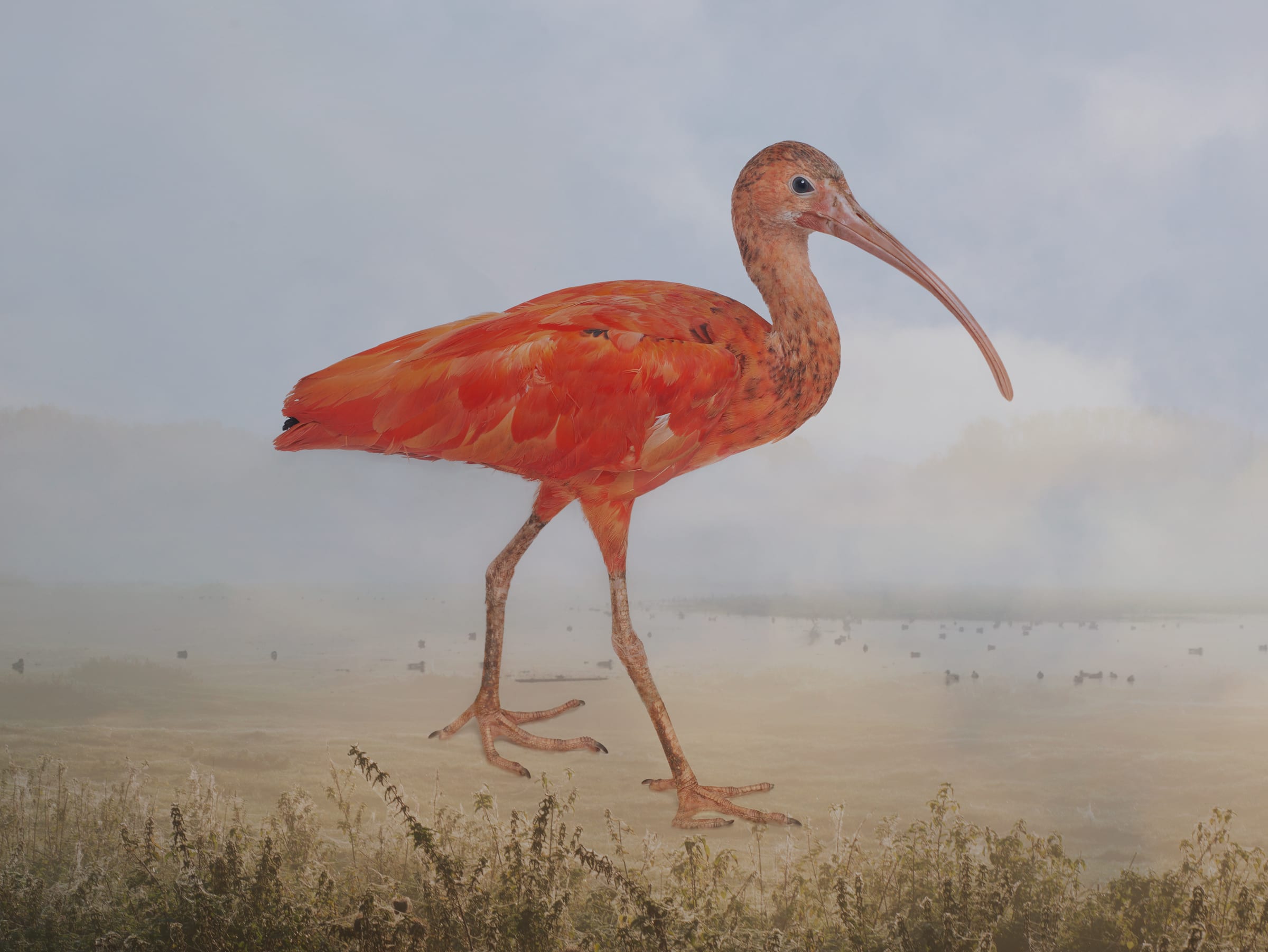
“Reflecting on these historical works led to thoughts about native and alien species, and what it means to be indigenous. There is an assumption that where things are, is where they belong, and a belief that native is good and alien is bad,” writes Carnegie.
“Sometimes people appear to interpret the terms, native and alien, to suit their own particular prejudices. Somewhere I imagine a voice saying, ‘Surely if it is attractive and there aren’t many of them it must be native?’”
All the animals in Carnegie’s series, titled Long Ago and Far Away, were photographed in a studio or in a studio set-up where the animals lived. They were positioned against a neutral background and lit with a combination of ambient and artificial lighting.
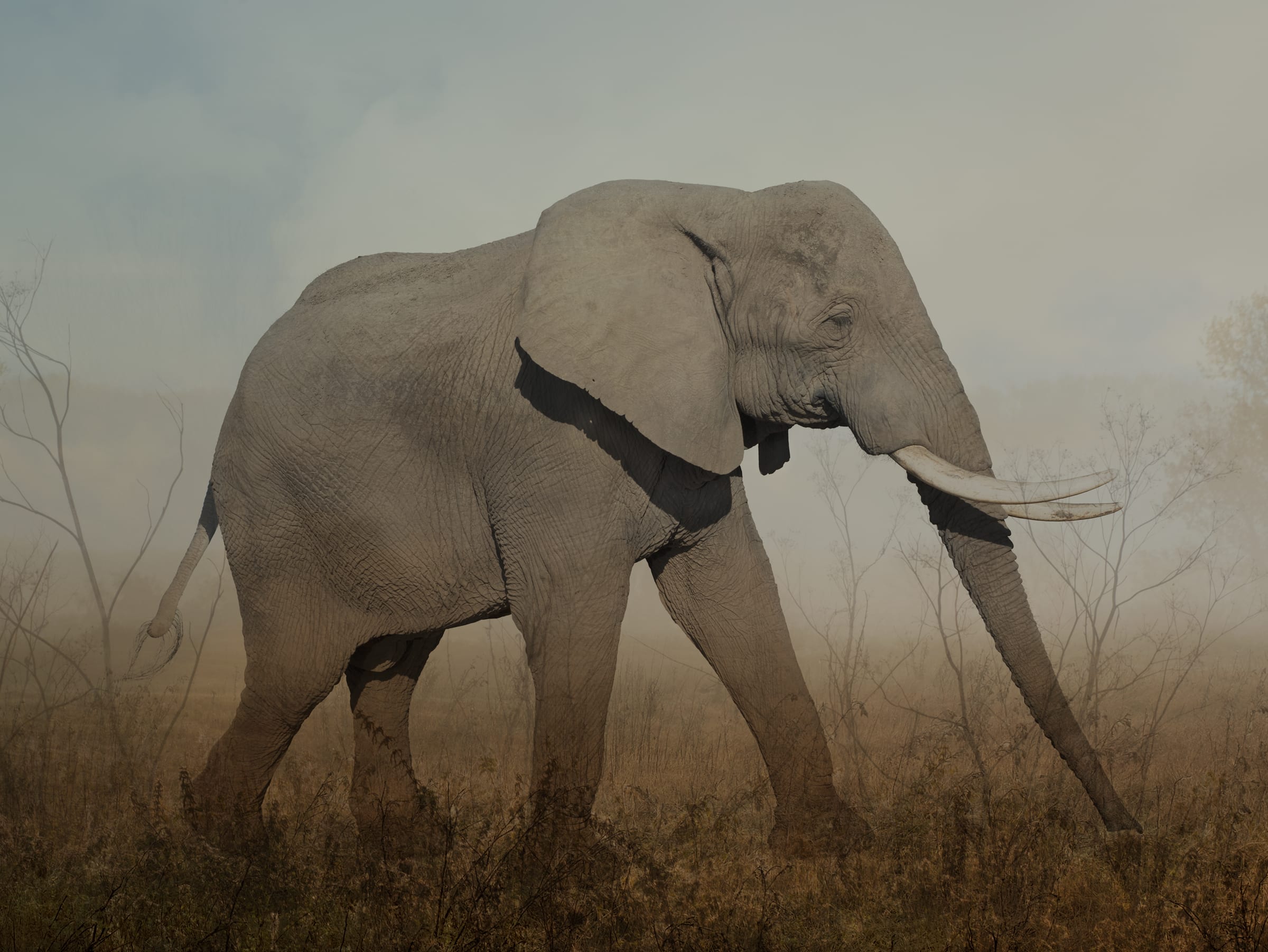
Different animals posed different challenges. It took four weeks before Stella the Zebra would pause long enough in the set created in her enclosure, whereas Moccas, the Andean Condor, turned up to Carnegie’s studio in an estate car, out of which he hopped out and walked alone into the studio.
Carnegie’s landscapes were made from combinations of landscapes layered in different degrees of opacity. Some of the landscapes were made up from places that relate to each other on some level. One landscape is part-Oxford, where Carnegie lives, part-Islay, a place he visits regularly, and part the Australian Outback where he has travelled.
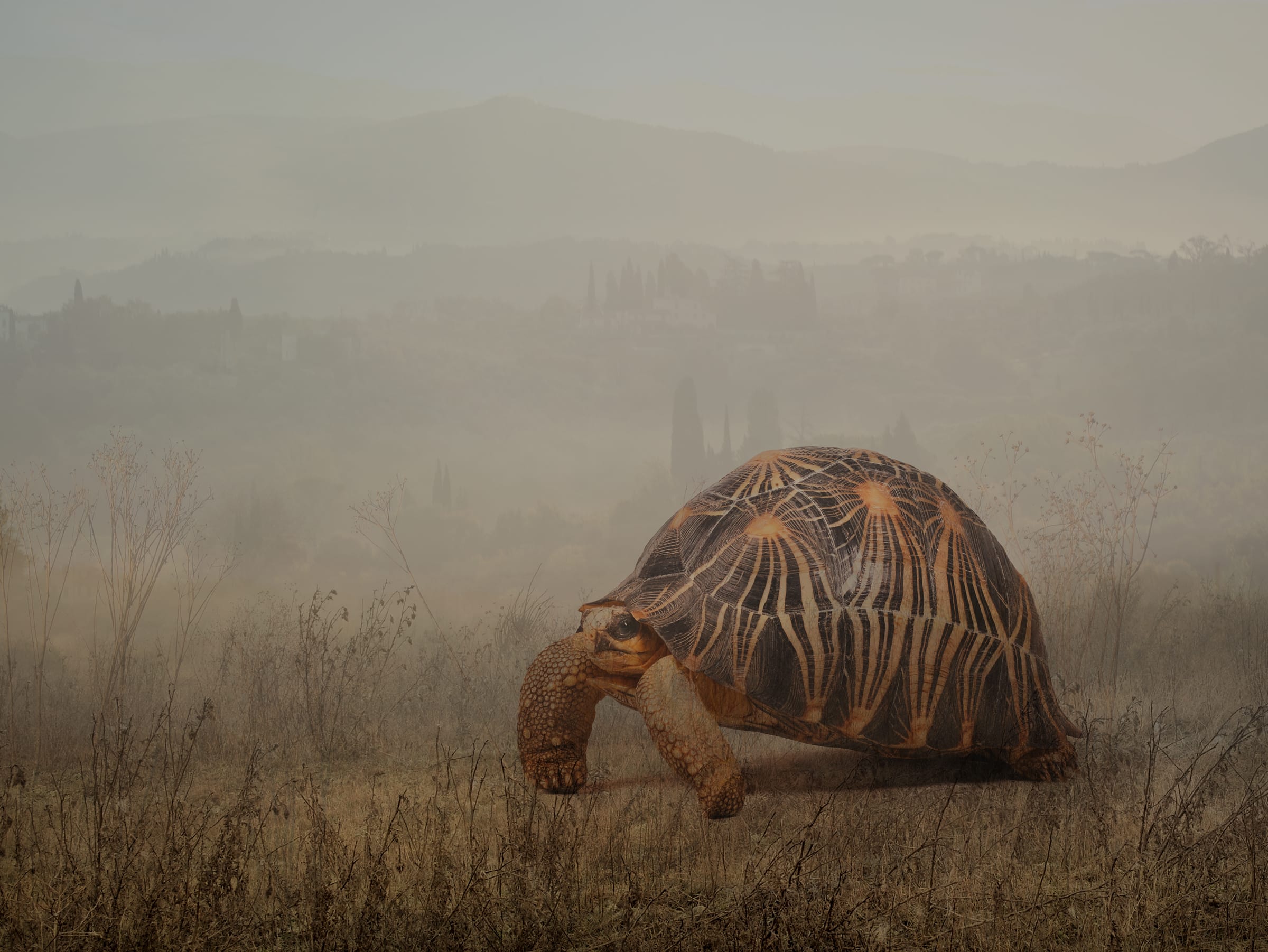
In Belonging, an essay accompanying Rory’s exhibition, to which BJP were given access, Chris Gosden writes:
“Much of the world appears fixed and stable. A map reveals familiar shapes of continents and islands which are both well-known and reassuring. Every latitude has its own winds, currents and exposure to the sun, allowing particular plants and animals to grow into complex communities. Here in Britain there are currently hints of spring, with crocuses growing up through the lawn, more birdsong than in the coldest months, the days lengthening and the trees have hints of buds.
“A landscape like that of Britain can be known and reassuring, even as it changes. It contains deep histories and continuities, from Bronze Age burial mounds to Norman castles or Victorian terraces. There is the possibility of feeling at home in such a landscape, particularly if, as children, we grew up in its smells, sights, sounds, hills and valleys.
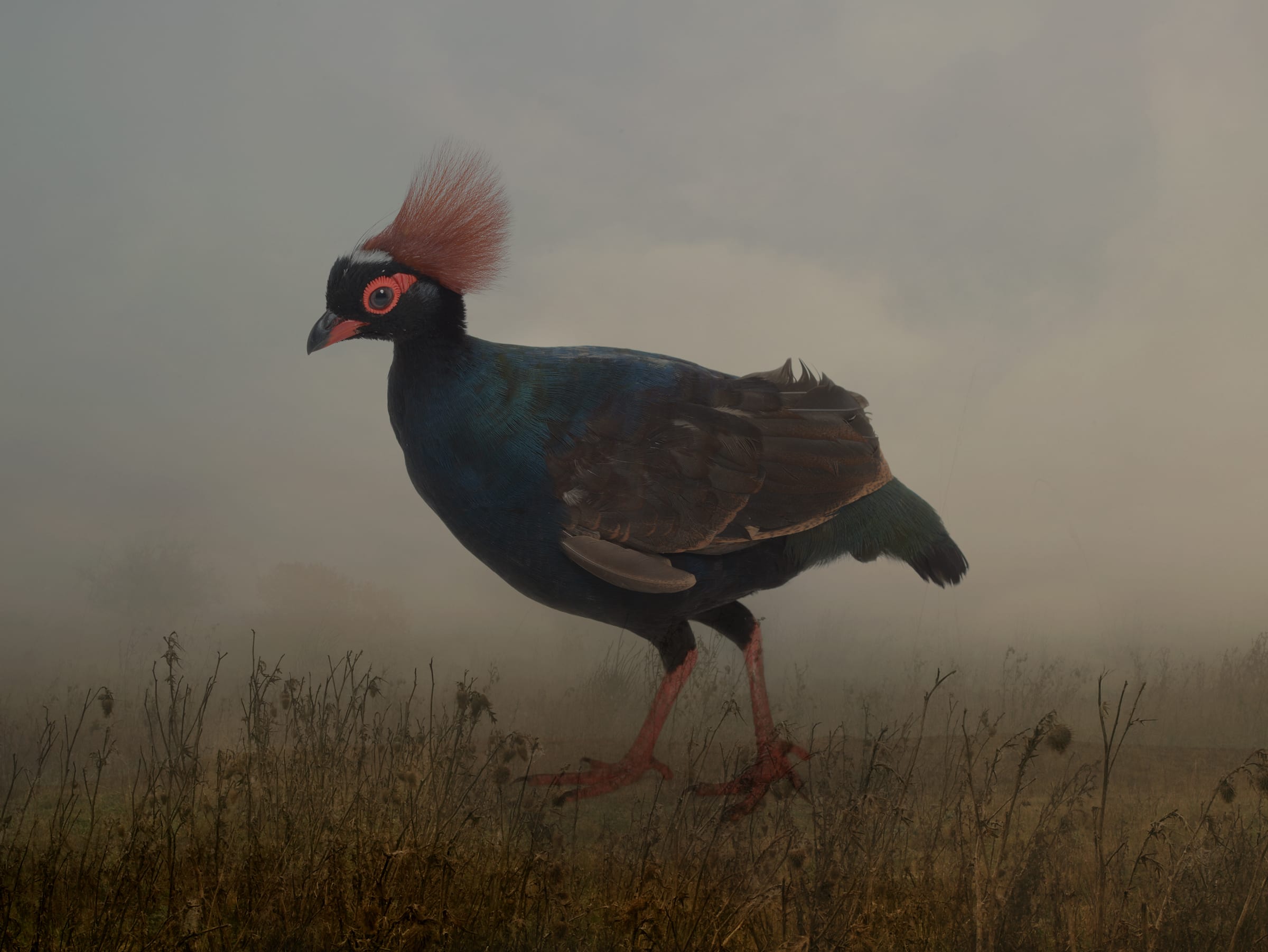
“The senses and emotions of our organisms become attuned to shapes, smells and colours, growing knowledgeable about this fraction of the world. But a landscape is not just something we know, but something we are. If the dense memories of moving, sensing and emotion in town and country were removed or changed, we would become somebody else. We are in the landscape, but it is within us. The same local familiarity is true of a rainforest group or the inhabitants of the Arctic Circle.
“Each of us has a patterned and structured response to the world we know, but the world itself is changing. We live for a relatively short time and it is hard to imagine the world being radically different from that we know. Some changes are so slow that living things cannot perceive them. Many of the rocks of southern Britain were formed millions of years ago in warm coral seas when this fragment of land lay far to the south, pulled slowly north by continental drift. As Europe moved towards its present position plant and animal communities shifted from tropical to temperate.
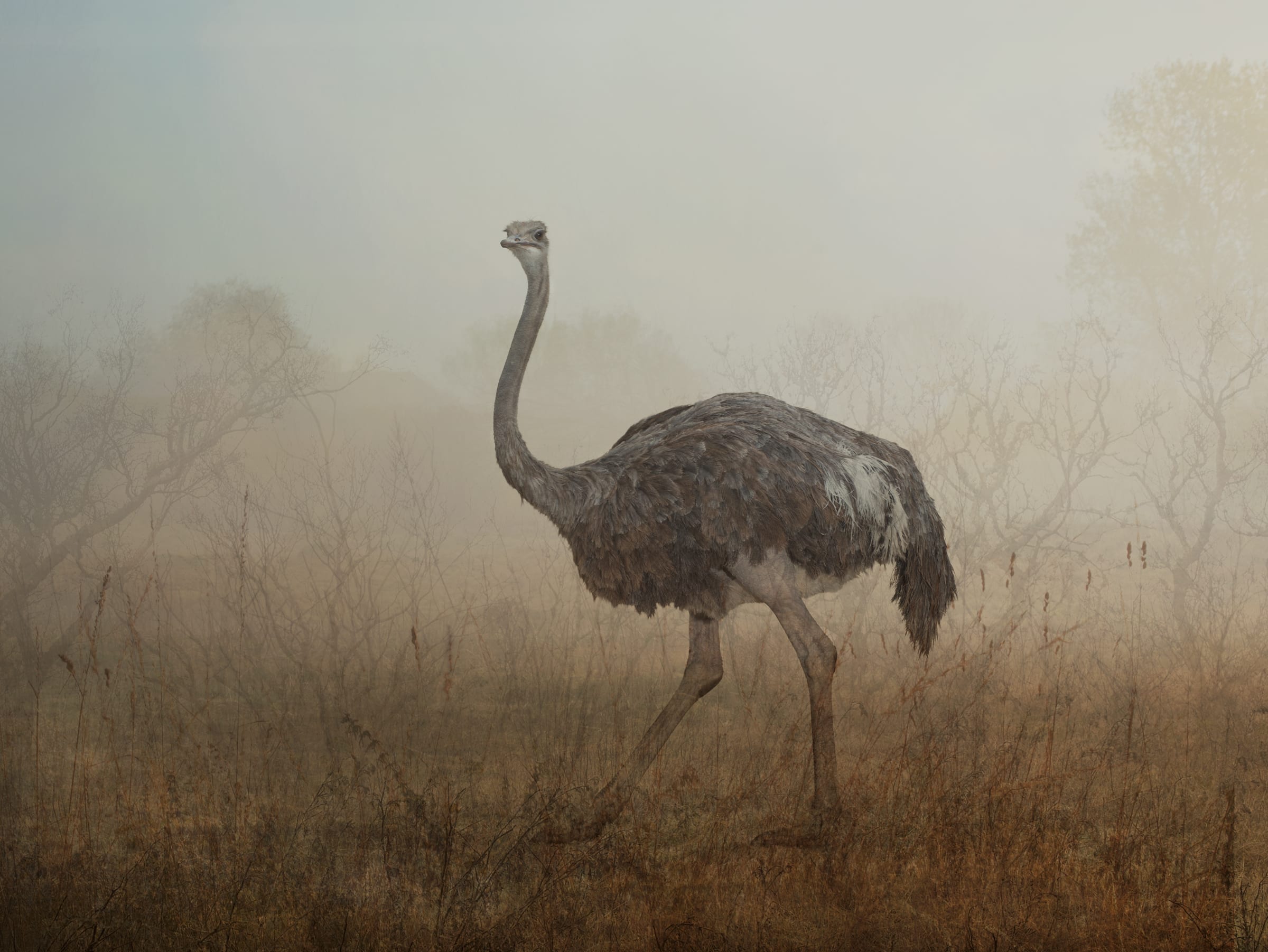
“On a slightly shorter timescale we can see that the development of human beings over the last five million years has been shaped by alternating warm and cold periods, that we now aggregate together as the Ice Age. People first arrived in Britain about 800,000 years ago during a warm period, leaving stone tools and butchered animal bones at Happisburgh in Norfolk. Britain was joined to the continent then and the Thames flowed out onto an extended north European plain through what is now East Anglia.
“Humans hunted and gathered plants in rich grasslands by the river together with ancestral mammoths, hyenas, elk, deer, wild horses and beaver. Hyena droppings have been preserved showing evidence of their diet, which was gained in competition with people. Even more miraculously footprints have been found in the mud, probably from five different people including both adults and children.
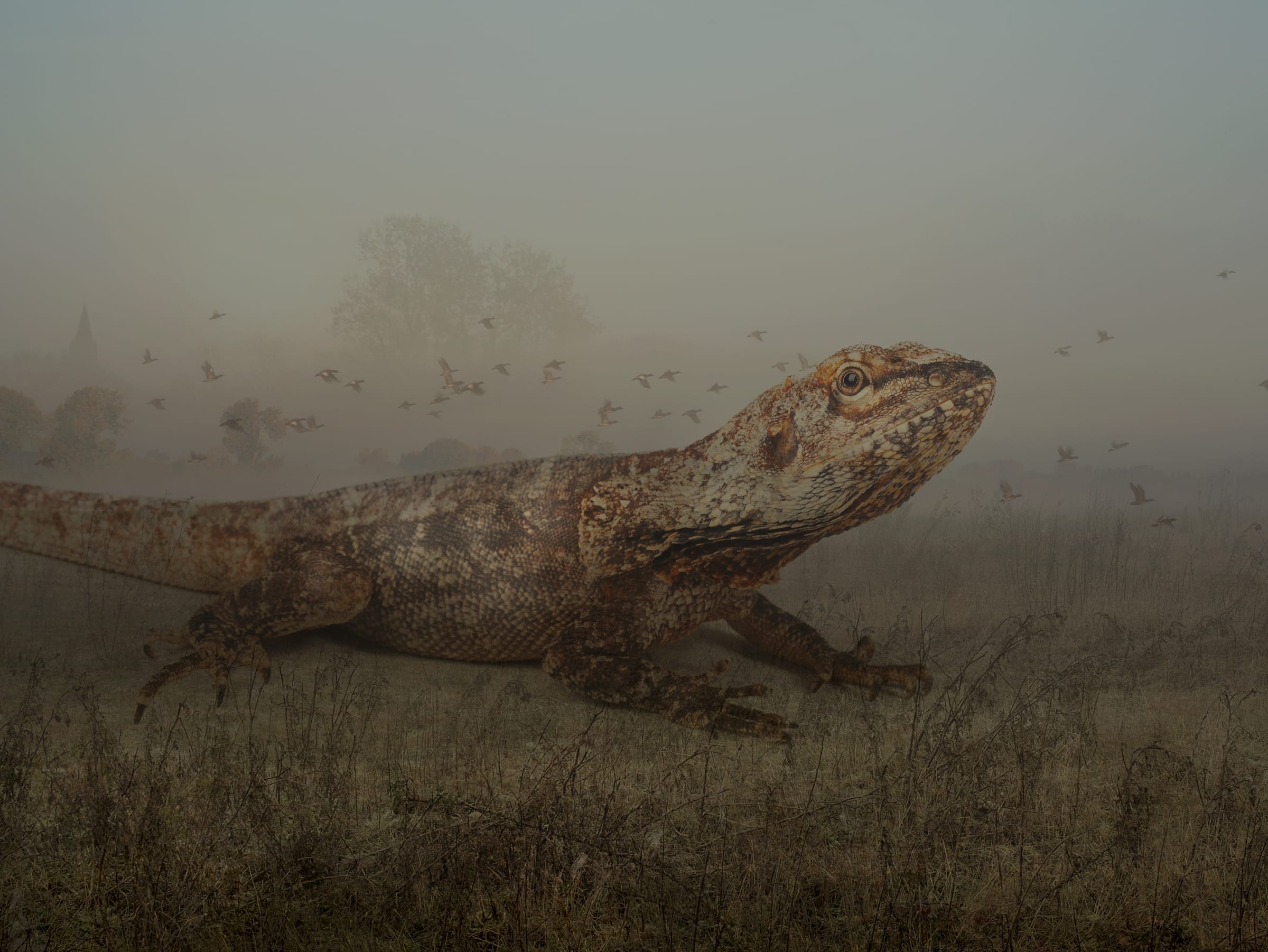
“Maybe this was a small family group working together in a rich, but dangerous, environment? For a long while humans only came this far north during warm periods, having originally evolved in the savannahs of Africa.
“Around 40,000 years ago people came to stay, even in the most bitter cold, probably because clothes, shelter and control of fire allowed for survival through the depths of the last glaciation.
“We can imagine a tremendously slow time-lapse film of the last three million years, with the ice caps expanding down to the Thames in the coldest times, and mammoths, woolly rhino or reindeer grazing on the tundra to the south, hunted by sabre toothed tigers, lions and wolves.
“Each time the temperature warms, grassland and trees migrate slowly from the south, mammoths and reindeer migrate north to be replaced by deer, horses, elephants and rhinos.
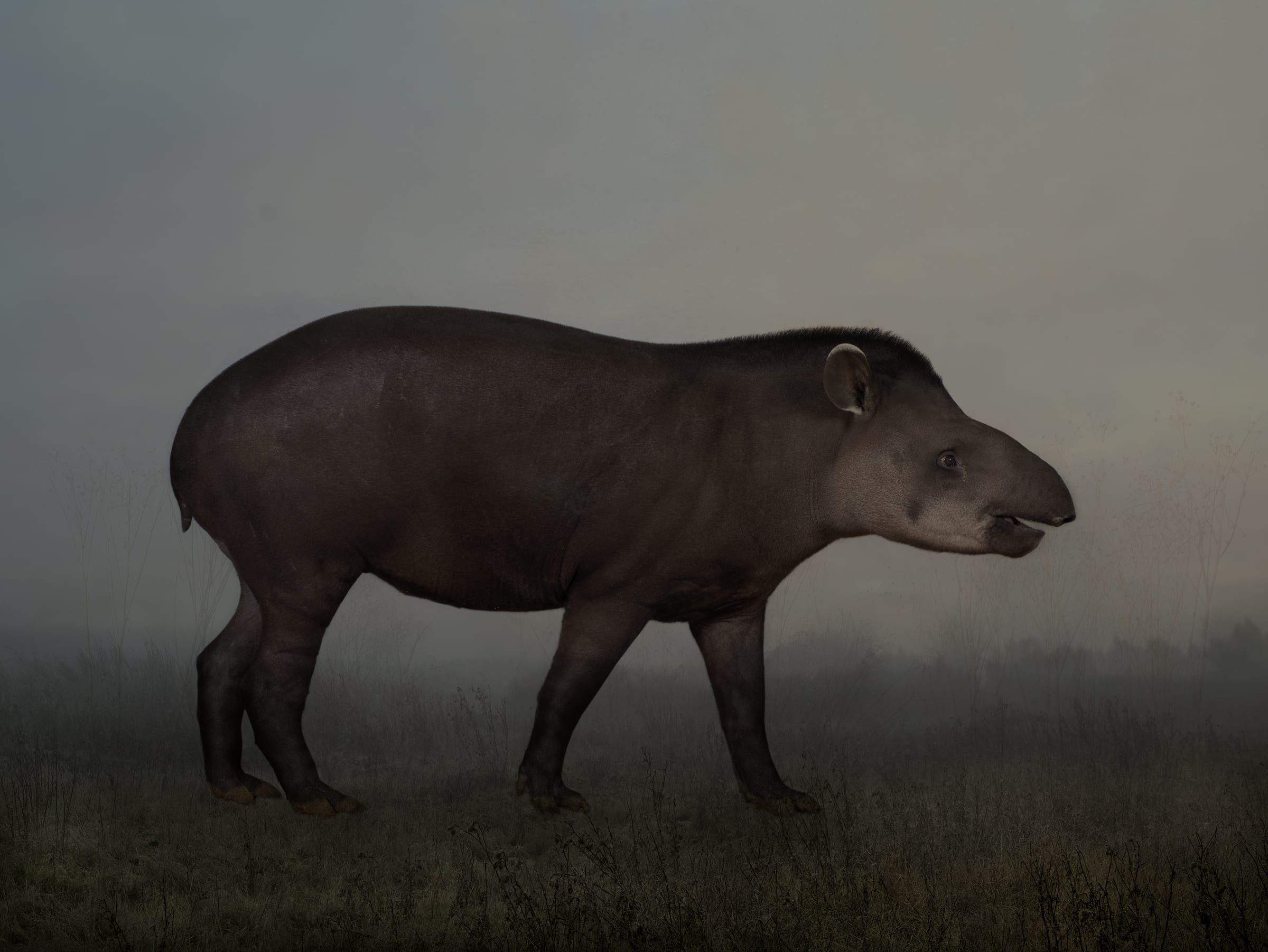
“The film stops in the present to reveal a temperate world in which unprecedented events have occurred: human populations are huge and living in unusually solid and impressive settlements, joined by road, rail and air. This is the world we know, feel at home in and accept as natural. But it is just one of many such worlds that have existed in these islands, each taken for granted by its inhabitants.
“The last warm period started 10,000 years ago, during which time people have mixed up and complicated the world. Sheep and goats, wheat and barley originally from a small natural distribution in eastern Turkey have been moved by farming groups east and west, arriving in Britain just over 6000 years ago. Domesticated cows and pigs came in later, apples arrived from central Asia, rabbits and roses were introduced by the Romans in Britain.
“The speed and scale of circulation of plants and animals has hugely increased over the last few centuries. The so-called ‘Columbian exchange’ starting when Columbus sailed across the Atlantic in 1492 and has brought much from the Americas to Europe: potatoes, tomatoes, maize, beans, coffee, chillis are just a small proportion of the immigrants. When we eat potatoes and roast beef we have no awareness that both were originally foreign to these islands.
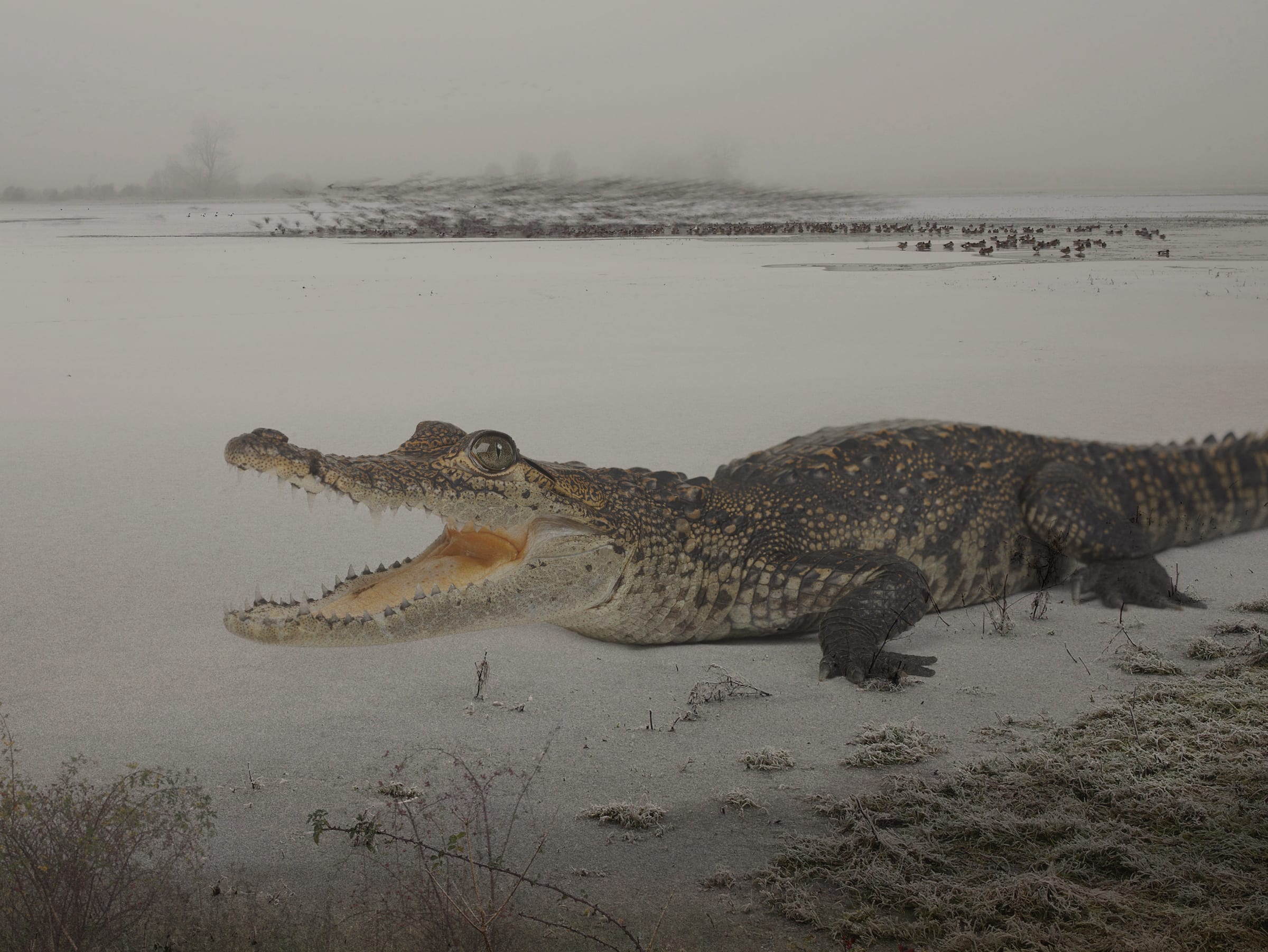
“Most living things in most parts of the world are temporary residents. The beautiful birds and animals in this exhibition of photographs by Rory Carnegie seem to have more control over their destiny than many of their fellow travellers. They have inserted themselves into our world from some other. Self-conscious of what they have done, they are proud, slightly amused or uninterested. There is little attempt to blend in, except that occasionally they are not fully separated from their backgrounds, some of their molecules mixing with vegetation and earth.
“I wanted to classify these birds and animals into creatures that have an evolutionary history within Eurasia and which could have been here in times past, or at least have close relatives who visited. The rhino has probably been here before, in the company of early humans, and looks belligerently at home, although its hooves don’t quite touch the ground.
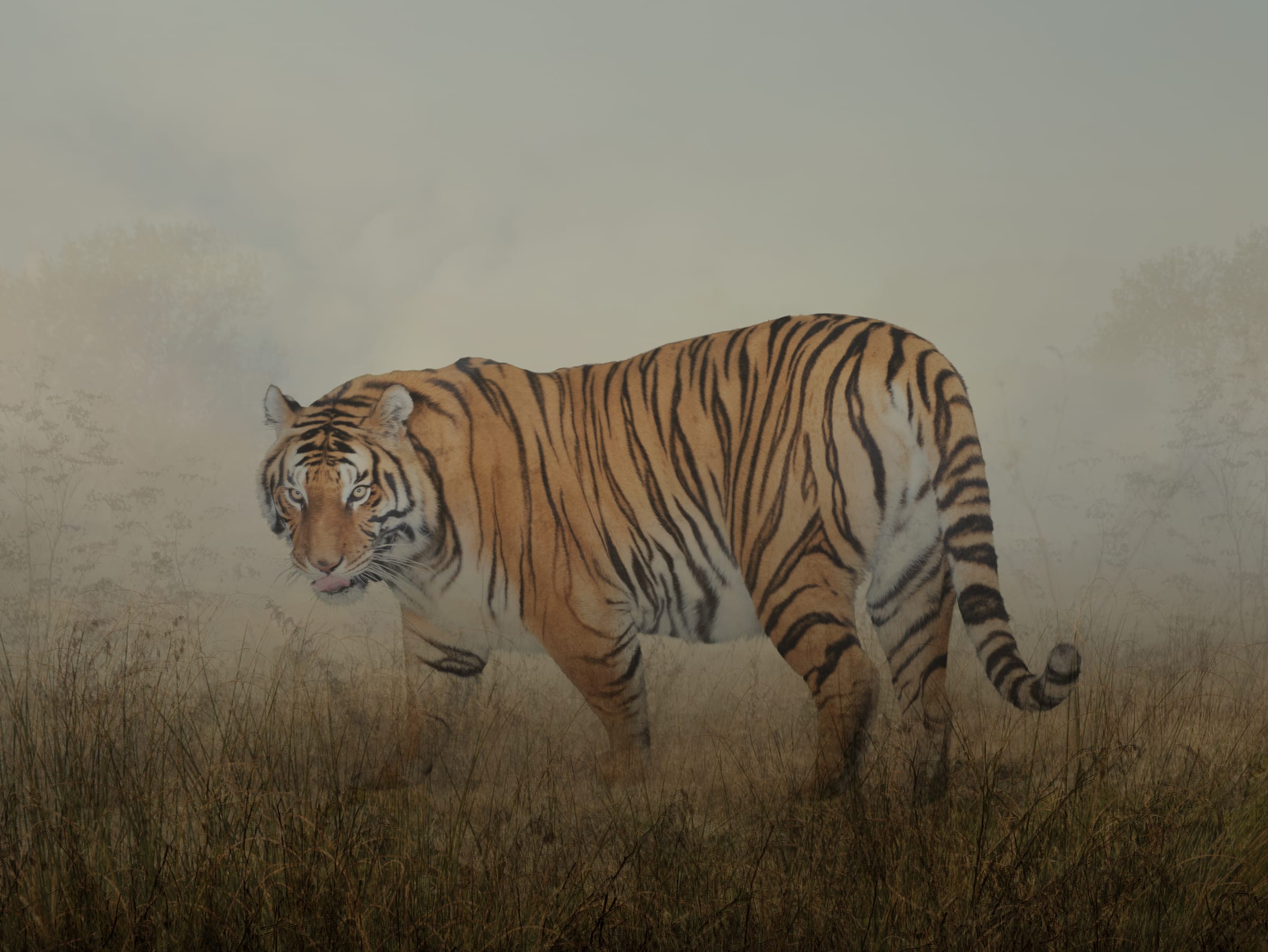
“The clouded leopard lives currently in mainland and southeast Asia, but the length of its canines have led some to wonder whether it is related to sabre tooth tigers, again earlier inhabitants of Britain. The delicacy of the leopard and the slightly hallucinatory effect of its markings do not look local.
“Many of these creatures have an otherworldly look, causing us to wonder what they might be. Amazonian groups see tapirs (and indeed most other living things) as human. Other species are clothed or cloaked in a different body,but share a soul or inner life with all human groups. Analogies or comparisons can be made: the waterholes allow tapirs to drink in a similar manner to humans imbibing manioc beer.
“The sifaka lemur is one of us deep down, being a primate, with an attitude in its portrait that is either shocked or aggressive, depending upon your view. The radiated tortoise is also from Madagascar, an island once part of the southern continent of Gondawanaland, separate in evolutionary heritage from Eurasia.
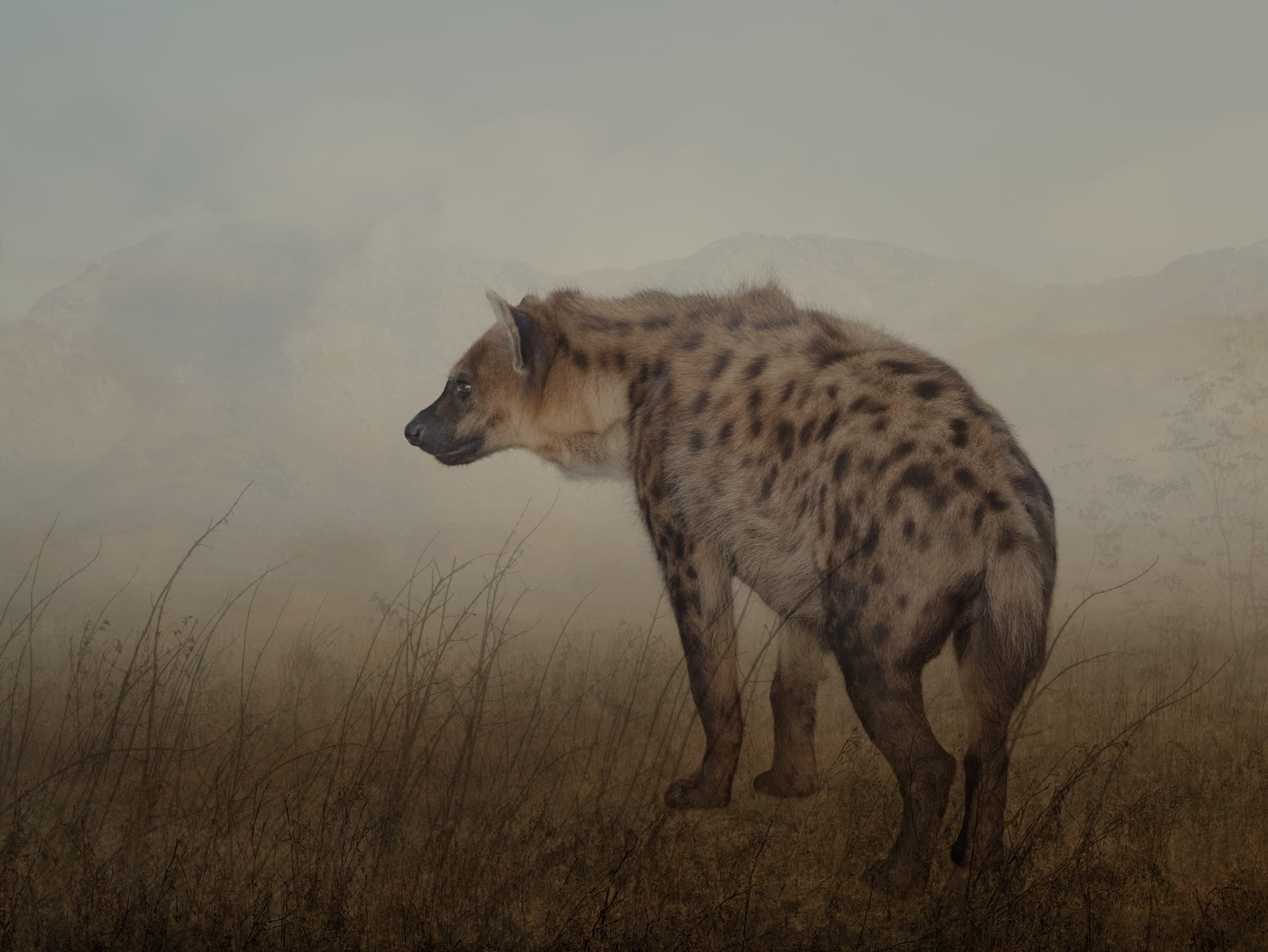
“The Andean vulture was described by Linneaus and given the name Vultur gryphus, although it is likely that it evolved separately from Old World vultures. As pictured here it is totally involved in its own flight and landing, oblivious to the viewer.
“For the archaeologist, photographs are confronting. We prefer long histories and slow changes, whereas photographs celebrate the instant. However, it is not quite that simple, as every time we look at a photograph we see something different. Indeed I suspect that some of these creatures may have moved between viewings, enjoying their own private joke or secret purposes beyond the frame.
“But these photographs combine various spaces in any case and so evoke different times in combination. The layered nature of the images allow us to see, or imagine, various things at once.
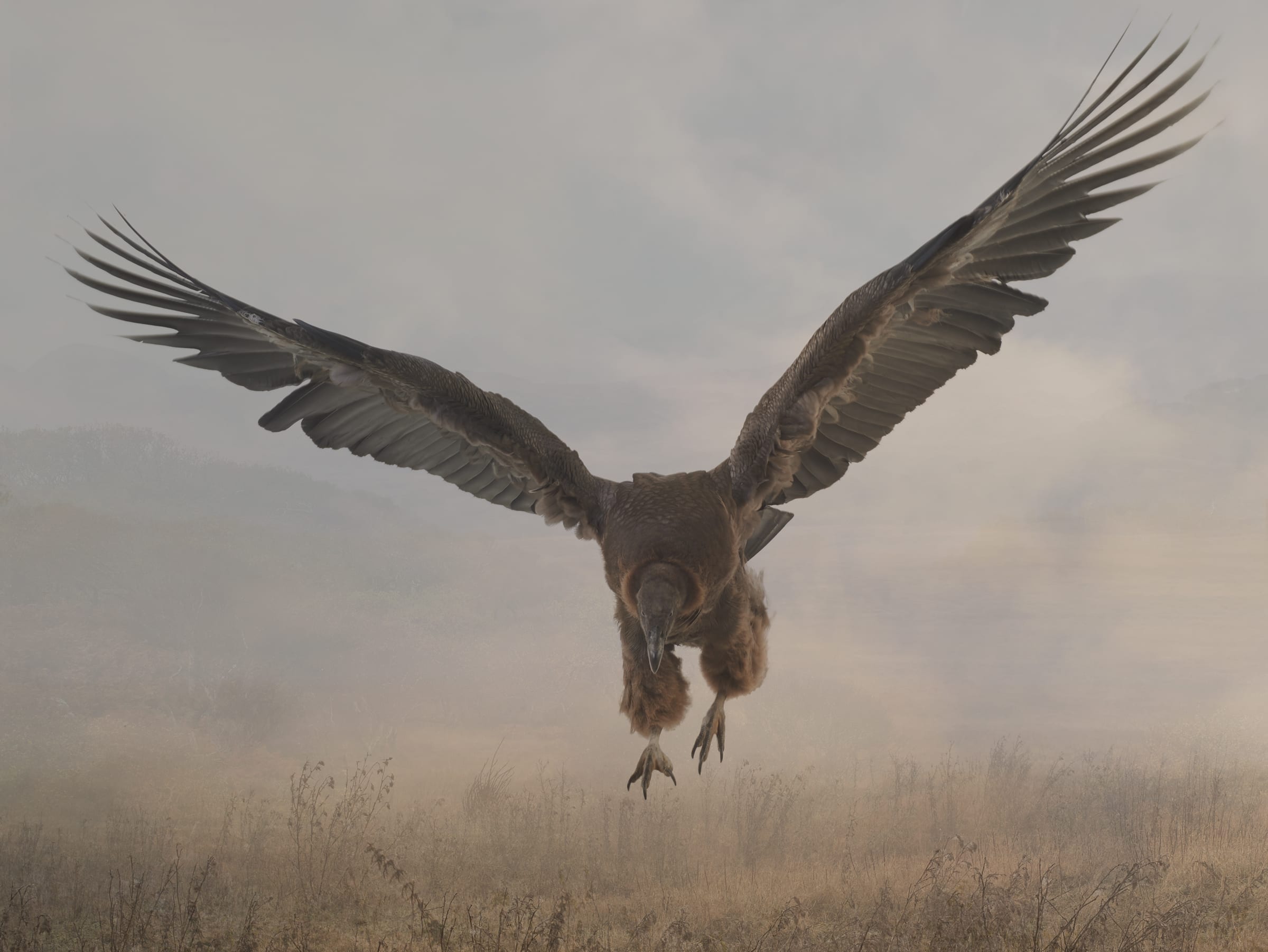
“Most strangers that want to belong try to blend in. These birds and animals stand out, by virtue of their beauty, incongruity and attitude. Very obviously present, they are also detached from their surroundings. Each one lingers in the memory, but changes every time you look at it. Our worlds are made of things we know, understand and cherish, but also of experiences which are novel, confronting and puzzling.
“The world has existed for so long and our perception of it is so short, that we cannot discount the possibility of a sifaka silhouetted against a mountain or a rhino pawing the meadow somewhere near us. Imagining such possibilities is the first step in accepting, and indeed celebrating, the new, the surprising, the amusing and the disconcerting. All of these qualities are evident in this marvelous exhibition of photographs by Rory Carnegie.”
Rory Carnegie, Long Ago and Far Away is exhibited until 21 May 2016 at John Martin Gallery, 38 Albemarle Street London W1S 4JG. For more information see here.
